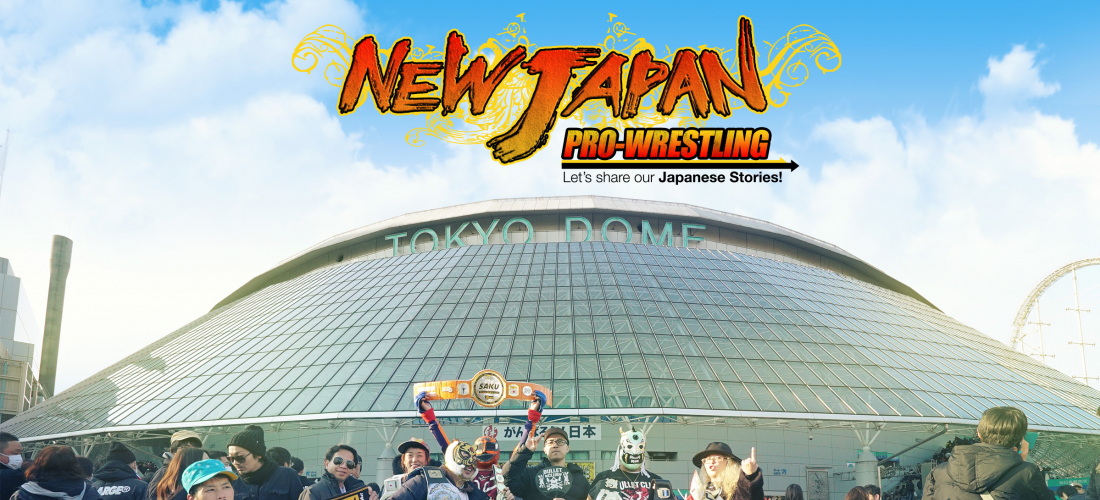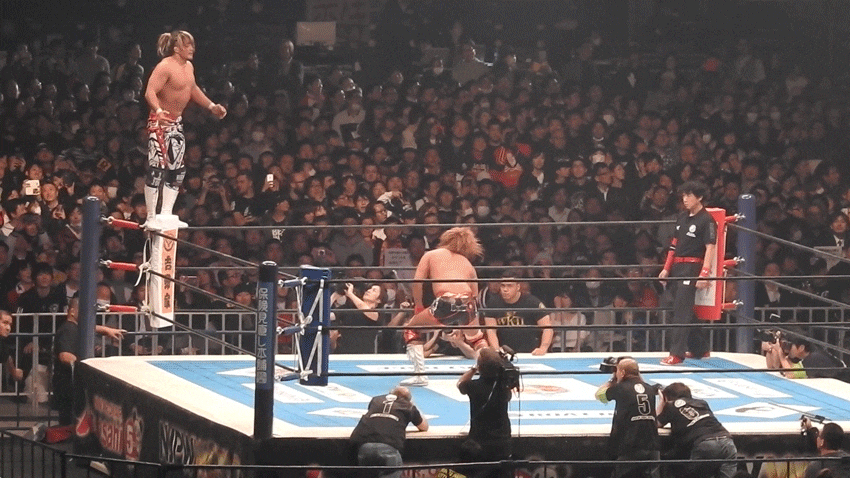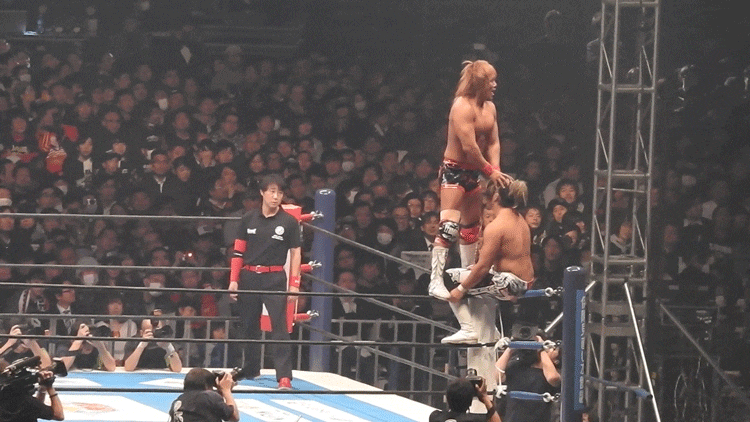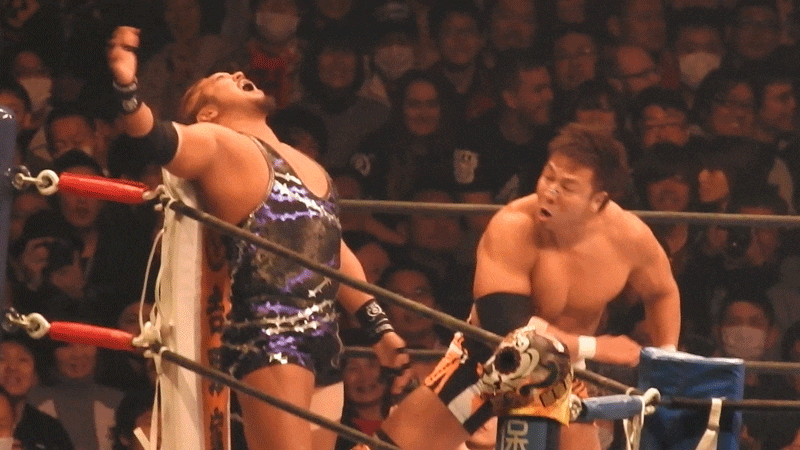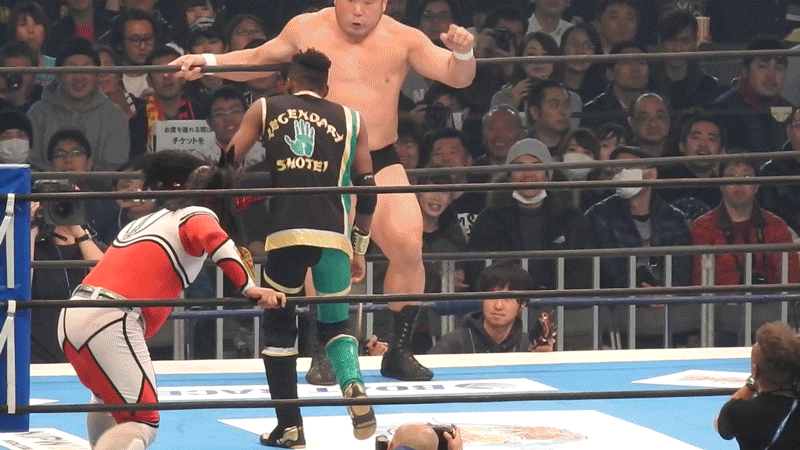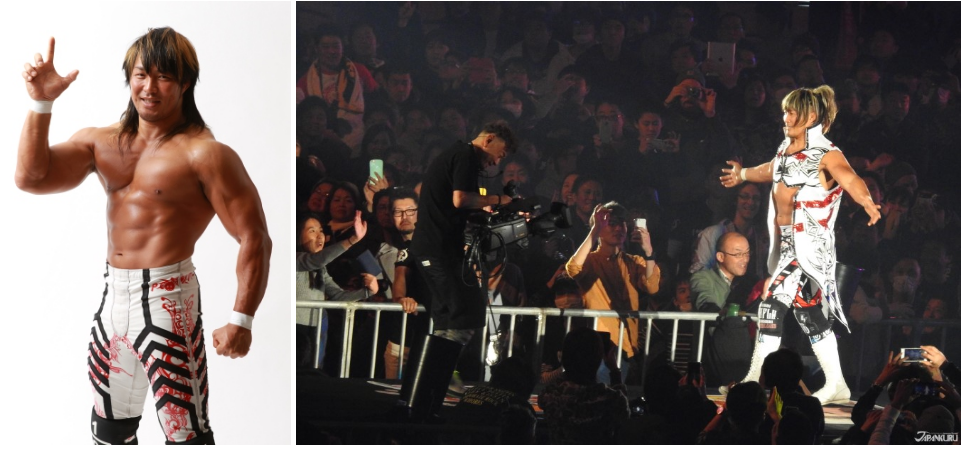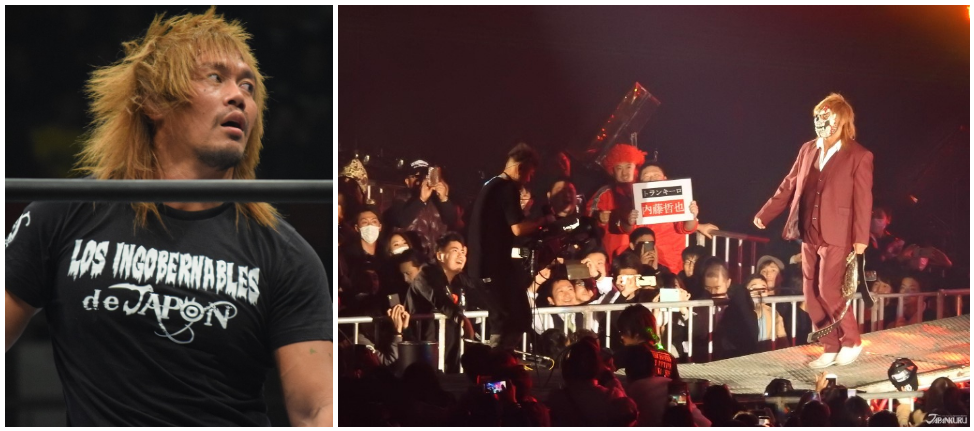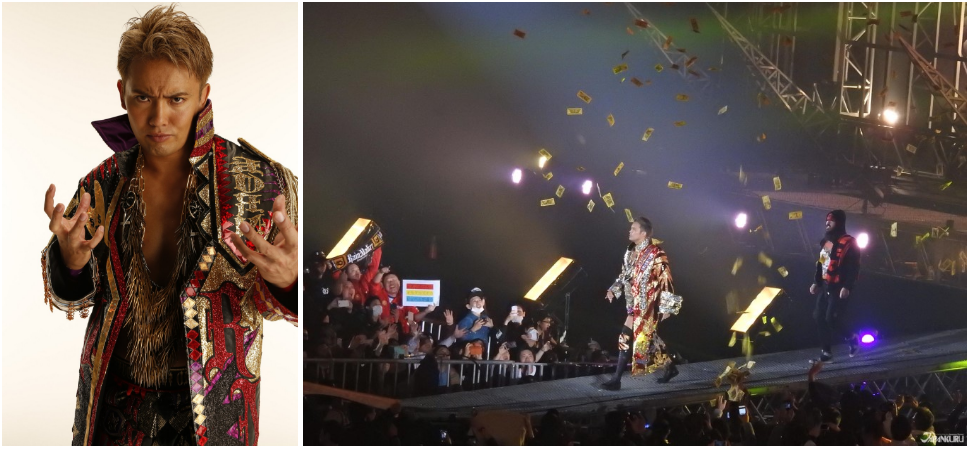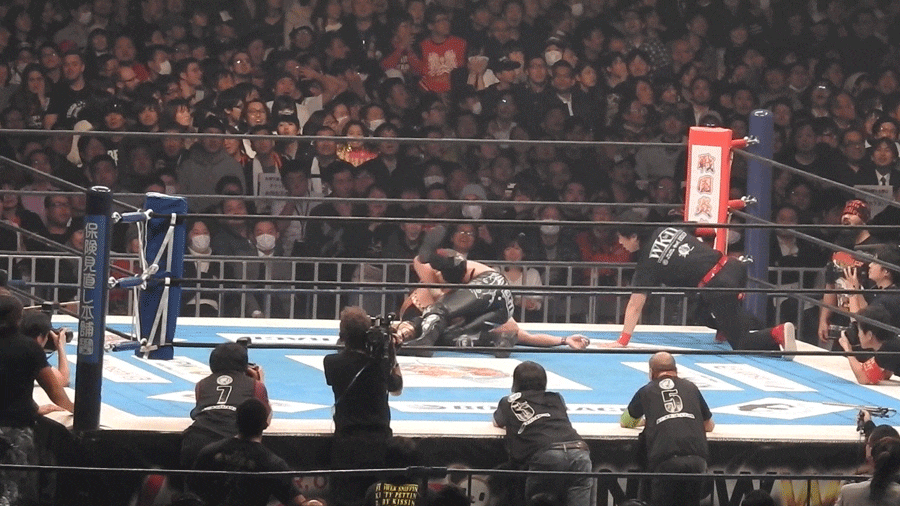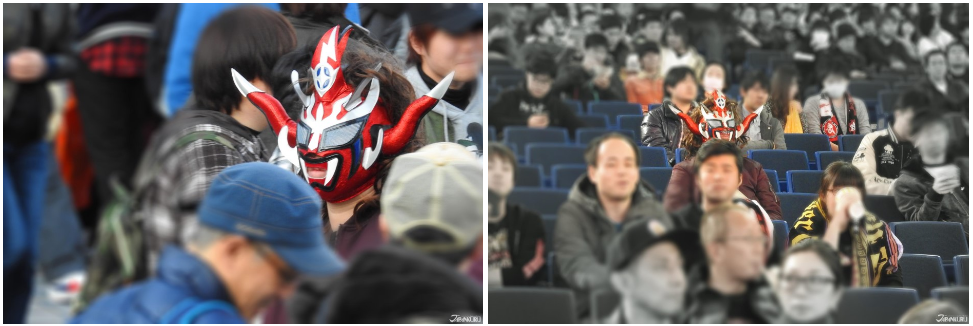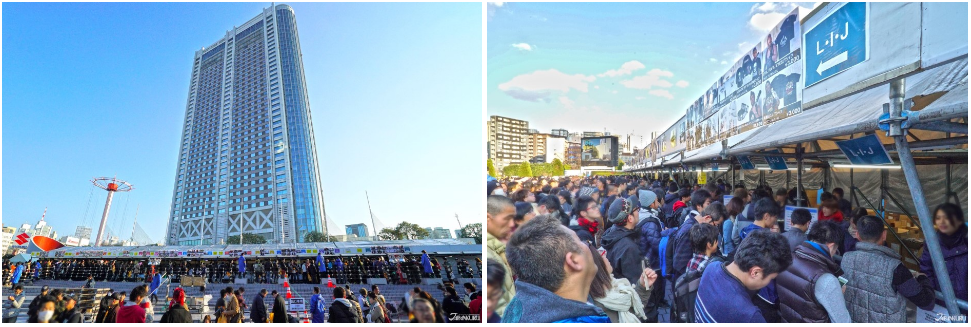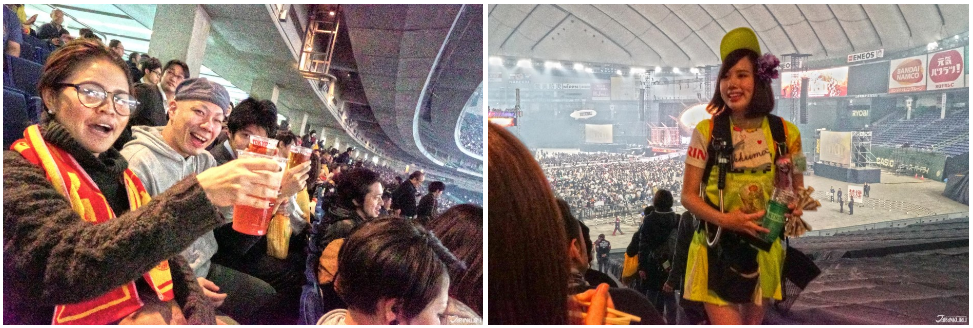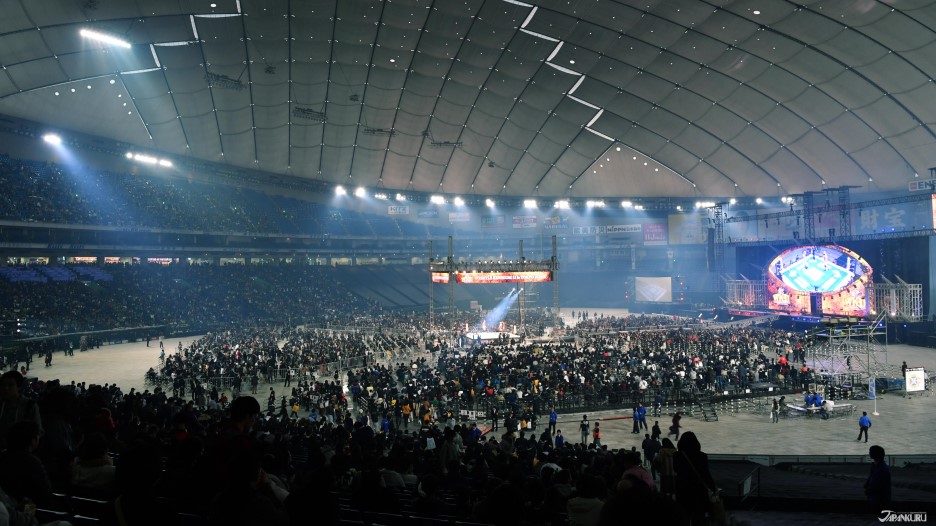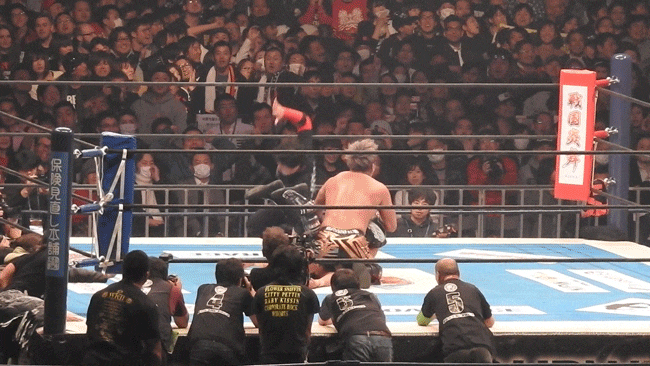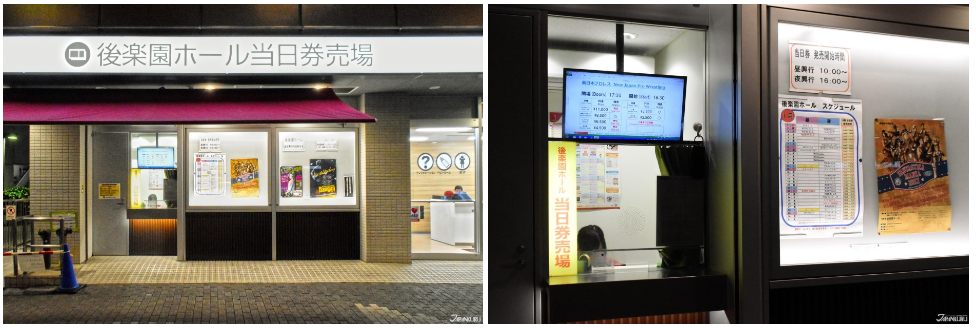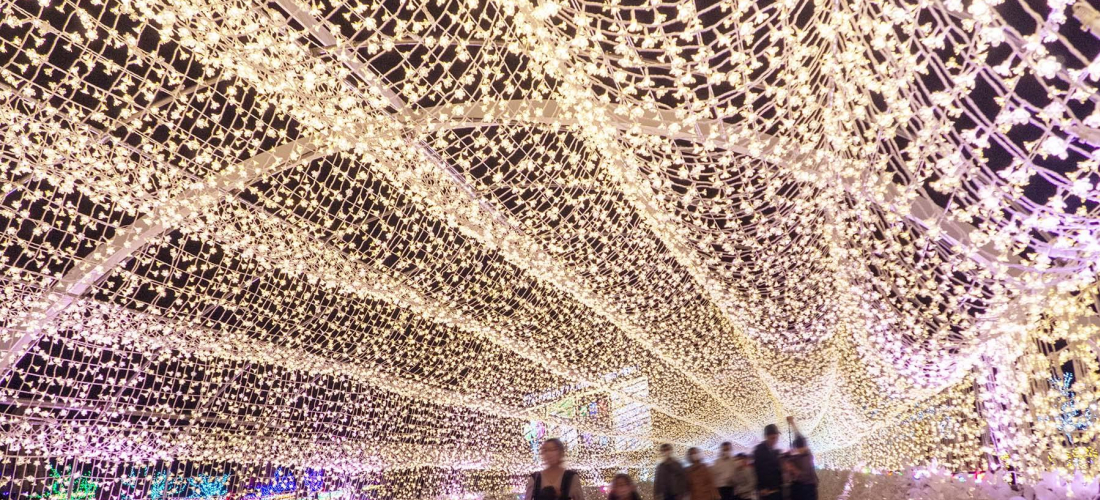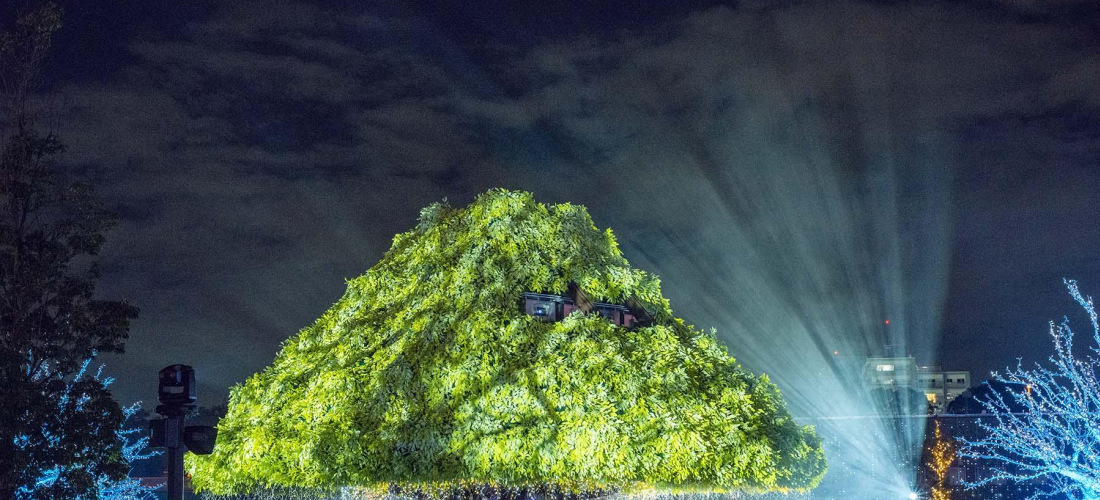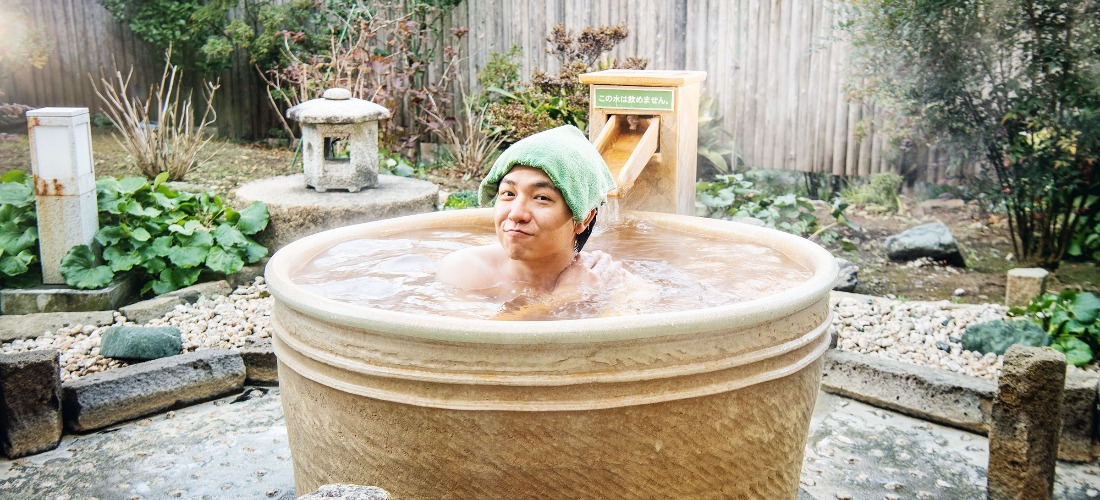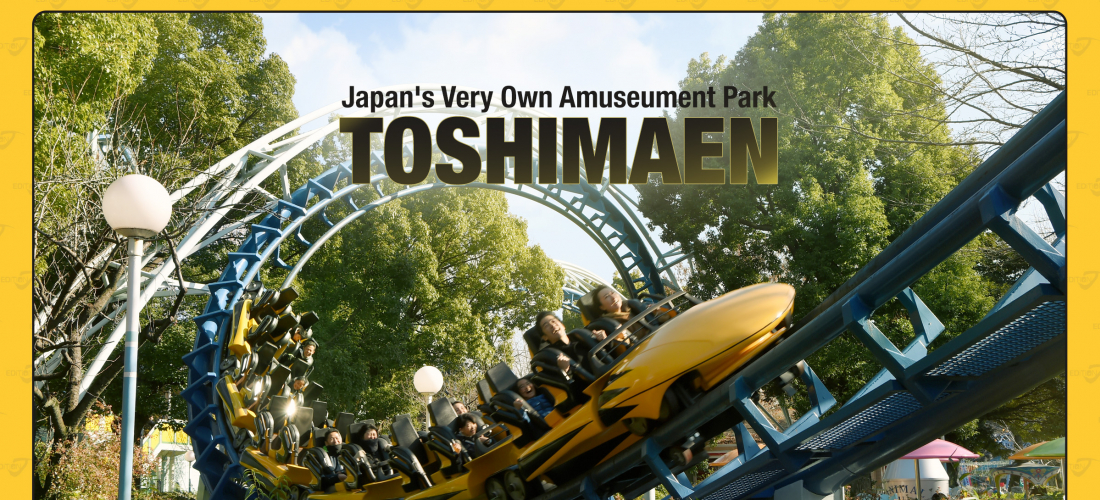CONTENTS
Story of Wrestling in Japan
JAPANKURU went to see Japanese wrestling for the first time.
"I do not care about winning or losing,
I will just give out everything in this game."
Why Japanese is so crazy about wrestling,
Why is professional wrestling popular in Japan?
We record all of it in this article.
History of 45 years – New Japan Pro Wrestling –
”New Japan Pro-Wrestling" founded in 1972 is a representative of Japan Wrestling.
New Japan Pro Wrestling Ring established by the world famous wrestler “Inoki Antonio, ” has reached its peak in the 1980s, and ”Akira Maeda" ”Riki Choshu" ”Tiger Mask” started appearing at TV shows became famous stars.
After that, the wrestling of the mixed martial arts boom such as K – 1 made wrestling in Japan ceased in a stagnant period.
Meanwhile, in the rapidly changing era, the young players of the New Japan Pro Wrestling have continued to persist in the "Wrestling Pro-wrestling Aesthetics.” Now, In 2017 again, the 3rd boom of new pro-wrestling has began in Japan!
The charm of wrestling is "aesthetics"
"Aesthetics" that catches your opponent's skills beautifully
This is the charm of wrestling.
Point 1 – Powerful act! Brilliant technique!
Each brilliant technique has its own name.
In particular, the star-class players have a “finishing technique” to win the games.
There are many difficult names, but all are gorgeous, and really it's amazing to see in real!
“Avalanche Frankensteiner”
Basic technique – Reverse horizontal chop
Basic Technique- Body slam
Basic Technique- larist
Rain Maker (Making shower of money)
Point 2 – Good-looking players like Johnny’s boy bands’ idols(?)
Now, one of the reasons Japanese women are enthusiastic about wrestling … Why?, Johnny’s level? (Popular idol band groups in Japan that are under the production company called Johnny’s)
More than Johnny’s level.
"One person's devotion in 100 years" Tanahashi is the leading role who has driven the New Japan Pro Wrestling.
Wearing a handsome mask and having a great body, he says that he keeps standing in the ring every day to protect the sluggish professional wrestling.
Faithful to the fundamentals of wrestling, and his elegant and beautiful techniques are said like the real textbooks.
"My life is made by me"
Naito, who is "uncontrollable charisma", enthusiastically find charm for Tanahashi player and enter the to New Japan Pro Wrestling.
After learning wrestling in Mexico, he formed a team called ”Los Ingobernables de Japón" in New Japan Pro Wrestling.
Finally, beating Tanahashi, hero he was longing for, to get the champion belt.
His nickname is ”Rain-maker."
It means ”Audiences gather to see me, audiences gather buy my goods. That is why I bring a shower of money to New Japan Pro Wrestling.”
Actually, he is a popular Wrestler of New Japan Pro-Wrestling.
He also decorated the finale of the Tokyo Dome Match on January 4, 2017.
A fateful rival crashes in the match fighting for “title.”
While being surrounded by many audiences, he would show off his wonderful performances with all his strength.
Defeat the opponent with a tremendous deathblow, keep both shoulders on the ring and at the same time the referee starts counting.
"One, two, threeeeeee …"
At that moment, while the opponent was thought already defeated, he lifted up one shoulder~!
One of the highlights is the costumes of each players. Especially, preparing all the goods of your favorite players, such as T-shirts, masks, accessories, towels etc. , fan are getting ready at the cheering seat.
Their enthusiasm is surely a great force and power for the players.
Wrestlers who are as popular as the Japanese idols! Look at their amazing sales of related goods!
T-shirts, caps, and towels are popular items.
Get one as a souvenir of your trip to Japan!
Nice design! Easy to use everyday!
Watching Pro wrestling, there are no difficult rules.
Enjoy your heart and body with MAX tension as much as you like! Yes!! like enjoying a LIVESHOW !!!
They also sell snacks and drinks!
Just eat, drink and shout and enjoy!!!
Get rid of all your stress!
What is New Japan Pro-Wrestling?
Why keep saying New Japan~ New Japan~ blah blah blah….
Why so amazing?
Let’s check them out~
Tokyo Dome
“Dream Ballpark,” which every famous entertainer wants to stand on that stage once.
A pro wrestling game will be held only once a year at this "Tokyo Dome," which is used as a baseball field on a regular basis and also loved as a concert hall for domestic and foreign artists.
We went to the game on the 4th of January.
Only few of the professional wrestling groups in Japan, it seems that only "New Japan Pro-Wrestling" can play in the Tokyo Dome.
How beautiful and cheerful to take/catch the technique without avoiding from the opponent …
"Aesthetics" of such wrestling can never be tasted in other sports.
For wrestlers competing with each other on a ring, they are professional enough to respond to the crowd of the audience!
Isn’t it real and live?
Are you interested in watch "Wrestling" while traveling in Japan?
For people who wanted to see wrestling while traveling to Tokyo,
we will introduce you places and ticket purchasing methods. (Same day tickets are also sold.)
Location: Korakuen Hall (in Tokyo Dome City)
For more info about New Japan Pro- Wrestling…
>>New Japan Pro- Wrestling English website has opened!
http://www.njpw1972.com/
>>Wanna check the anything about games, please go to the New Japan Pro-wrestling World
http://njpwworld.com/
>>NEW JAPAN PRO-WRESTLING【OFFICIAL/ENGLISH】
https://www.facebook.com/newjapaneng/?fref=ts
***
For more interesting topics,
Please click on JAPANKURU to check out our official blog
Be sure to look at JAPANKURU🐶 for more exciting articles every day!!
Details
NAME:New Japan Pro-Wrestling
MAP
1-3-61 Koraku, Bunkyo, Tokyo 112-0004
COMMENT
FEATURED MEDIA
VIEW MORE 
A New Tokyo Animal Destination: Relax & Learn About the World’s Animals in Japan
#pr #japankuru #anitouch #anitouchtokyodome #capybara #capybaracafe #animalcafe #tokyotrip #japantrip #카피바라 #애니터치 #아이와가볼만한곳 #도쿄여행 #가족여행 #東京旅遊 #東京親子景點 #日本動物互動體驗 #水豚泡澡 #東京巨蛋城 #เที่ยวญี่ปุ่น2025 #ที่เที่ยวครอบครัว #สวนสัตว์ในร่ม #TokyoDomeCity #anitouchtokyodome

Shohei Ohtani Collab Developed Products & Other Japanese Drugstore Recommendations From Kowa
#pr #japankuru
#kowa #syncronkowa #japanshopping #preworkout #postworkout #tokyoshopping #japantrip #일본쇼핑 #일본이온음료 #오타니 #오타니쇼헤이 #코와 #興和 #日本必買 #日本旅遊 #運動補充能量 #運動飲品 #ช้อปปิ้งญี่ปุ่น #เครื่องดื่มออกกำลังกาย #นักกีฬา #ผลิตภัณฑ์ญี่ปุ่น #อาหารเสริมญี่ปุ่น

도쿄 근교 당일치기 여행 추천! 작은 에도라 불리는 ‘가와고에’
세이부 ‘가와고에 패스(디지털)’ 하나면 편리하게 이동 + 가성비까지 완벽하게! 필름카메라 감성 가득한 레트로 거리 길거리 먹방부터 귀여움 끝판왕 핫플&포토 스폿까지 총집합!
Looking for day trips from Tokyo? Try Kawagoe, AKA Little Edo!
Use the SEIBU KAWAGOE PASS (Digital) for easy, affordable transportation!
Check out the historic streets of Kawagoe for some great street food and plenty of picturesque retro photo ops.
#pr #japankuru #도쿄근교여행 #가와고에 #가와고에패스 #세이부패스 #기모노체험 #가와고에여행 #도쿄여행코스 #도쿄근교당일치기 #세이부가와고에패스
#tokyotrip #kawagoe #tokyodaytrip #seibukawagoepass #kimono #japantrip

Hirakata Park, Osaka: Enjoy the Classic Japanese Theme Park Experience!
#pr #japankuru #hirakatapark #amusementpark #japantrip #osakatrip #familytrip #rollercoaster #retrôvibes #枚方公園 #大阪旅遊 #關西私房景點 #日本親子旅行 #日本遊樂園 #木造雲霄飛車 #히라카타파크 #สวนสนุกฮิราคาตะพาร์ค

🍵Love Matcha? Upgrade Your Matcha Experience With Tsujiri!
・160년 전통 일본 말차 브랜드 츠지리에서 말차 덕후들이 픽한 인기템만 골라봤어요
・抹茶控的天堂!甜點、餅乾、飲品一次滿足,連伴手禮都幫你列好清單了
・ส่องมัทฉะสุดฮิต พร้อมพาเที่ยวร้านดังในอุจิ เกียวโต
#pr #japankuru #matcha #matchalover #uji #kyoto #japantrip #ujimatcha #matchalatte #matchasweets #tsujiri #말차 #말차덕후 #츠지리 #교토여행 #말차라떼 #辻利抹茶 #抹茶控 #日本抹茶 #宇治 #宇治抹茶 #日本伴手禮 #抹茶拿鐵 #抹茶甜點 #มัทฉะ #ของฝากญี่ปุ่น #ชาเขียวญี่ปุ่น #ซึจิริ #เกียวโต

・What Is Nenaito? And How Does This Sleep Care Supplement Work?
・你的睡眠保健品——認識「睡眠茶氨酸錠」
・수면 케어 서플리먼트 ‘네나이토’란?
・ผลิตภัณฑ์เสริมอาหารดูแลการนอน “Nenaito(ネナイト)” คืออะไร?
#pr #japankuru #sleepcare #japanshopping #nenaito #sleepsupplement #asahi #睡眠茶氨酸錠 #睡眠保健 #朝日 #l茶胺酸 #日本藥妝 #日本必買 #일본쇼핑 #수면 #건강하자 #네나이토 #일본영양제 #อาหารเสริมญี่ปุ่น #ช้อปปิ้งญี่ปุ่น #ร้านขายยาญี่ปุ่น #ดูแลตัวเองก่อนนอน #อาซาฮิ

Japanese Drugstore Must-Buys! Essential Items from Hisamitsu® Pharmaceutical
#PR #japankuru #hisamitsu #salonpas #feitas #hisamitsupharmaceutical #japanshopping #tokyoshopping #traveltips #japanhaul #japantrip #japantravel

Whether you grew up with Dragon Ball or you just fell in love with Dragon Ball DAIMA, you'll like the newest JINS collab. Shop this limited-edition Dragon Ball accessory collection to find some of the best Dragon Ball merchandise in Japan!
>> Find out more at Japankuru.com! (link in bio)
#japankuru #dragonball #dragonballdaima #animecollab #japanshopping #jins #japaneseglasses #japantravel #animemerch #pr

This month, Japankuru teamed up with @official_korekoko to invite three influencers (originally from Thailand, China, and Taiwan) on a trip to Yokohama. Check out the article (in Chinese) on Japankuru.com for all of their travel tips and photography hints - and look forward to more cool collaborations coming soon!
【橫濱夜散策 x 教你怎麼拍出網美照 📸✨】
每次來日本玩,是不是都會先找旅日網紅的推薦清單?
這次,我們邀請擁有日本豐富旅遊經驗的🇹🇭泰國、🇨🇳中國、🇹🇼台灣網紅,帶你走進夜晚的橫濱!從玩樂路線到拍照技巧,教你怎麼拍出最美的夜景照。那些熟悉的景點,換個視角說不定會有新發現~快跟他們一起出發吧!
#japankuru #橫濱紅磚倉庫 #汽車道 #中華街 #yokohama #japankuru #橫濱紅磚倉庫 #汽車道 #中華街 #yokohama #yokohamaredbrickwarehouse #yokohamachinatown

If you’re a fan of Vivienne Westwood's Japanese designs, and you’re looking forward to shopping in Harajuku this summer, we’ve got important news for you. Vivienne Westwood RED LABEL Laforet Harajuku is now closed for renovations - but the grand reopening is scheduled for July!
>> Find out more at Japankuru.com! (link in bio)
#japankuru #viviennewestwood #harajuku #omotesando #viviennewestwoodredlabel #viviennewestwoodjapan #비비안웨스트우드 #오모테산도 #하라주쿠 #日本購物 #薇薇安魏斯伍德 #日本時尚 #原宿 #表參道 #japantrip #japanshopping #pr

Ready to see TeamLab in Kyoto!? At TeamLab Biovortex Kyoto, the collective is taking their acclaimed immersive art and bringing it to Japan's ancient capital. We can't wait to see it for ourselves this autumn!
>> Find out more at Japankuru.com! (link in bio)
#japankuru #teamlab #teamlabbiovortex #kyoto #kyototrip #japantravel #artnews
Photos courtesy of teamLab, Exhibition view of teamLab Biovortex Kyoto, 2025, Kyoto ® teamLab, courtesy Pace Gallery

Japanese Makeup Shopping • A Trip to Kamakura & Enoshima With Canmake’s Cool-Toned Summer Makeup
#pr #canmake #enoshima #enoden #에노시마 #캔메이크 #japanesemakeup #japanesecosmetics

⚔️The Robot Restaurant is gone, but the Samurai Restaurant is here to take its place. Check it out, and don't forget your coupon!
🍣신주쿠의 명소 로봇 레스토랑이 사무라이 레스토랑으로 부활! 절찬 쿠폰 발급중
💃18歲以上才能入場的歌舞秀,和你想的不一樣!拿好優惠券去看看~
#tokyo #shinjuku #samurairestaurant #robotrestaurant #tokyotrip #도쿄여행 #신주쿠 #사무라이레스토랑 #이색체험 #할인이벤트 #歌舞伎町 #東京景點 #武士餐廳 #日本表演 #日本文化體驗 #japankuru #japantrip #japantravel #japanlovers #japan_of_insta

Japanese appliance & electronics shopping with our KOJIMA x BicCamera coupon!
用JAPANKURU的KOJIMA x BicCamera優惠券買這些正好❤️
코지마 x 빅 카메라 쿠폰으로 일본 가전 제품 쇼핑하기
#pr #japankuru #japanshopping #kojima #biccamera #japaneseskincare #yaman #dji #osmopocket3 #skincaredevice #日本購物 #美容儀 #相機 #雅萌 #日本家電 #일본여행 #면세 #여행꿀팁 #일본쇼핑리스트 #쿠폰 #일본쇼핑 #일본브랜드 #할인 #코지마 #빅카메라 #japankurucoupon

